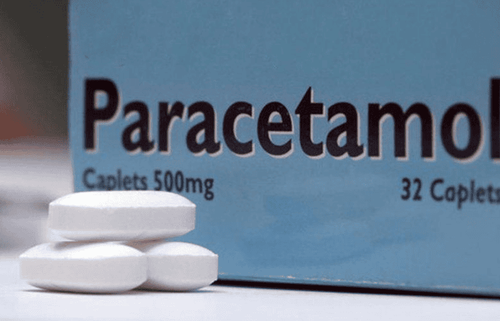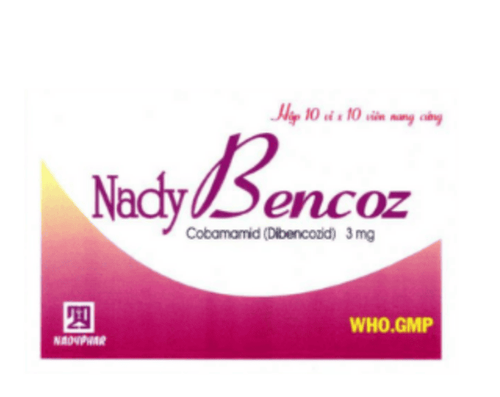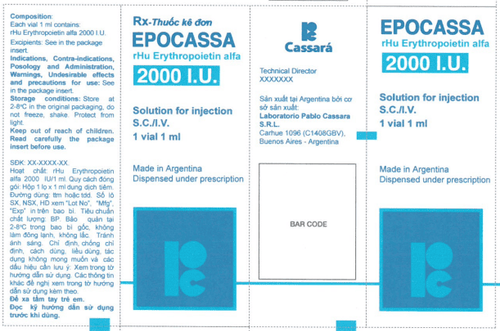This is an automatically translated article.
The article was professionally consulted by Specialist Doctor I Dang Thi Ngoc Chuong - Department of Pediatrics - Neonatology, Vinmec Central Park International General Hospital.An umbilical cord prolapse, also known as an umbilical hernia, is an abnormal bulge caused by a portion of the lining of the abdomen, intestines, or fluid coming out, through the muscles of the abdominal wall, and protruding through the baby's umbilical cord. born. Umbilical hernias are quite common and low birth weight and premature babies are more susceptible to umbilical hernias.
1. Causes of umbilical hernia
During pregnancy, the umbilical cord passes through a small opening in the fetal abdominal muscles, which closes shortly after birth. In the event that the abdominal wall muscles do not fully combine to close the umbilical cord, the baby's navel is open, there will be an umbilical hernia that occurs at birth or later when the child grows up.Parents can rest assured that doctors or midwives cutting or clamping the umbilical cord when the baby is born does not affect or cause an umbilical hernia.
Trắc nghiệm: Thế nào là trẻ sơ sinh đủ tháng?
Đặc điểm bên ngoài của trẻ sơ sinh đủ tháng được thể hiện qua các tiêu chuẩn như: Cân nặng, chiều dài và hình thể. Theo dõi bài trắc nghiệm dưới đây sẽ giúp các bậc cha mẹ hiểu thế nào là trẻ sơ sinh đủ tháng, qua đó có thể đánh giá tổng trạng sức khỏe và sự phát triển của bé yêu nhà mình.The following content is prepared under supervision of Thạc sĩ, Bác sĩ y khoa, Ma Văn Thấm , Nhi , Phòng khám Đa khoa Quốc tế Vinmec Dương Đông(Phú Quốc)
2. Symptoms of umbilical cord escape
Parents can see the hernia most clearly when the baby cries, coughs or the child is pushing to go to the toilet. Because these actions increase the pressure on the abdomen, it pushes the hernia into the umbilicus. The hernia may shrink or disappear when the baby is relaxed or asleep. Usually, the baby does not feel discomfort because the umbilical cord drainage is painless.Umbilical hernias are most common in infants - especially premature and low birth weight babies. In the United States, African-American infants have a higher risk of developing an umbilical hernia than children of other races. The incidence of umbilical hernia in boys and girls is equal.
The following symptoms can be serious signs of an umbilical hernia, so parents need to take the child to a medical facility immediately:
The child is in pain The child suddenly vomits The belly button is very soft, swelling or discoloration
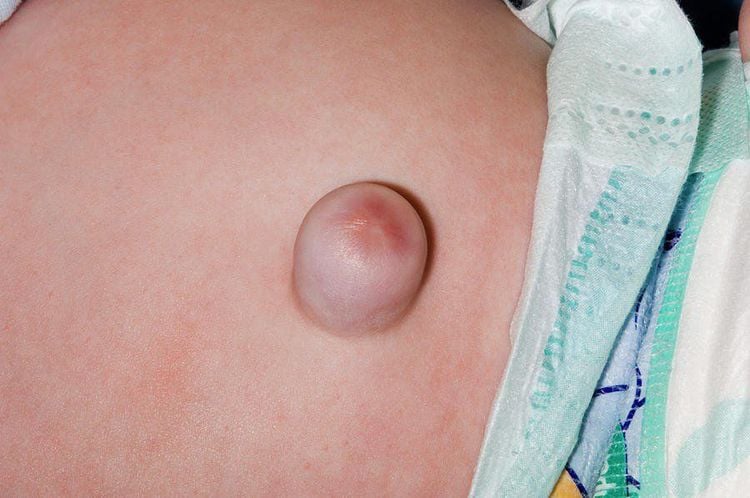
3. Complications of umbilical hernia
In children, complications from an umbilical hernia are rare. Complications can occur when the protruding intestine is stuck at the hernia opening and cannot be pushed back into the abdominal cavity. When stuck, it reduces the blood supply to the trapped intestine and can lead to umbilical pain and tissue damage. If the bowel becomes trapped and completely cut off from the blood supply (strangulated hernia), there is gradual necrosis. It eventually leads to an infection that can spread throughout the abdominal cavity, threatening the child's life.4. Treatment
Most umbilical hernias in infants will close on their own by the time the child is 1 to 2 years old. The doctor can even push the aneurysm back into the abdomen while examining the baby, but parents should not do this. Although some people think that umbilical hernia can be repaired by placing a coin over the hernia mass or using tape, experts recommend this method does not have any benefits and can cause germs to build up under the bandage, causing an infection of the umbilicus.For children with umbilical hernia, surgery is often indicated in the following cases:
The child has pain in the hernia mass The hernia is larger than 1 to 2 cm in diameter The hernia is large and does not reduce in size in the first two years of life Hernia mass does not disappear by the age of 4 Intestines trapped in the hernia
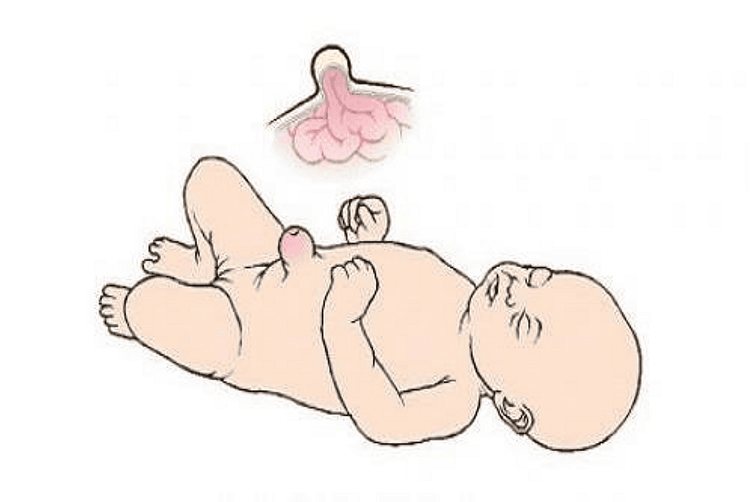
After the child is fully awake after surgery, most children are able to go home a few hours later.
After surgery, your child may be given an over-the-counter pain reliever to help him or her feel less pain after surgery. Your doctor will schedule a follow-up visit about 2 to 4 weeks after surgery. While at home, if the child experiences the following symptoms, the parents should take the child back to the health facility:
The child has a fever The surgical site is red, swollen or painful The child has a protruding umbilicus or near the navel The operation site has foul-smelling blood or fluid Your child has nausea, vomiting, diarrhea, or constipation that doesn't go away
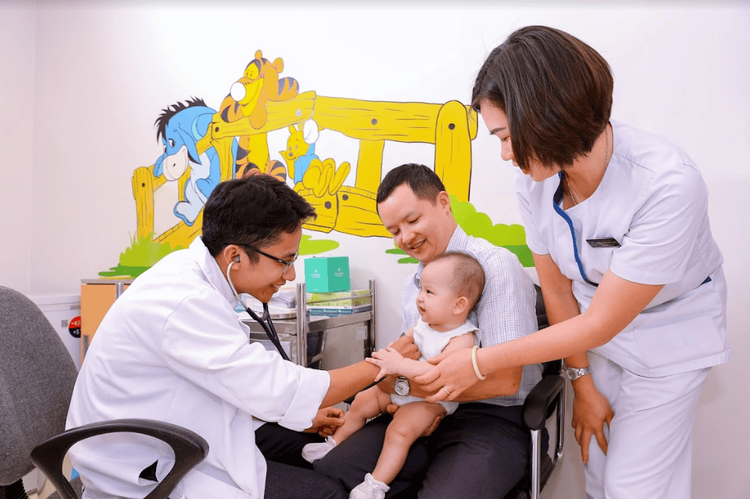
Specialist I Dang Thi Ngoc Chuong has worked at Children's Hospital I, Thu Duc Hospital and University Hospital of Medicine and Pharmacy in Ho Chi Minh City. With strengths in neonatal diagnosis and examination - neonatal resuscitation, Dr. Chuong is currently a pediatrician at Vinmec Central Park International General Hospital and a member of the Ho Chi Minh City Pediatric Association. Bright.
Articles refer to the source: webmd.com
MORE:
Does umbilical hernia in newborns go away on their own? When is it dangerous? Things to know about umbilical hernia in babies How to care for baby umbilical cord
Please dial HOTLINE for more information or register for an appointment HERE. Download MyVinmec app to make appointments faster and to manage your bookings easily.






